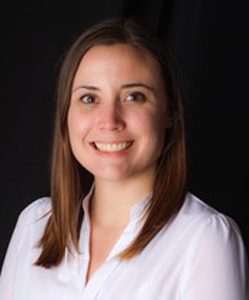Program Information
Selection of Candidate Lesions for Image-Guided Bone Biopsy Using [F-18]NaF PET/CT Response to Therapy
S Harmon*, C Morrison, M Tuite, R Jeraj, University of Wisconsin-Madison, Madison, WI
TH-A-WAB-5 Thursday 8:00AM - 9:55AM Room: Wabash BallroomPurpose: Site selection for image-guided biopsies in patients with multiple lesions is typically based on physician preference and clinical feasibility. This study aims to develop a method to additionally incorporate quantitative imaging data for automatic selection of candidate lesions for post-treatment bone biopsy, using [18F]NaF response metrics in combination with physician feasibility.
Methods: 12 metastatic prostate cancer patients undergoing conventional treatment received whole-body [18F]NaF PET/CT scans pre- and mid-treatment. We quantitatively optimized biopsy lesion selection by maximizing a lesion-specific objective function score(OFS). Here, OFS is defined as the weighted global sum of seven criteria separated into two categories: 1)physician-feasibility category including physician-preferred lesion location and absolute volume scores, and 2)imaging-response category including four imaging response metrics (lesion volume, SUVmax, SUVmean, SUVtotal %change from pre- to mid-treatment) and an overall response score. Criteria were weighted evenly within each category. Weighting ratios between physician-feasibility and imaging-response(PF:IR) were varied from 2:1 to 1:2 to test OFS sensitivity.
Results: 102 of 650+ total lesions met minimum criteria to qualify for biopsy. Within patients, maximum OFS ranged from <1%-27% greater than the next highest scoring lesion, indicating some patients have multiple lesions desirable for biopsy. Assessing sensitivity, within-patient lesion rankings based on OFS values were stable from 1:1-to-2:1 (R=0.94), 1:1-to-1:2 (R=0.96), and from 1:2-to-2:1 (R=0.81) for all lesions. Compared to 1:1, the lesion identified as having the maximum OFS remained top-seeded in 5 patients and in the top three highest ranking lesions in all patients for both 1:2 and 2:1. After selecting optimal candidates, biopsy feasibility was confirmed by the physician for 32/36 high-ranking lesions, of which all top choices were confirmed.
Conclusion: This newly developed computational optimization method was successfully used to quantitatively identify candidate lesions for bone biopsies. The method was robust to different weighting ratios and candidacy for biopsy was physician confirmed.
Contact Email:


